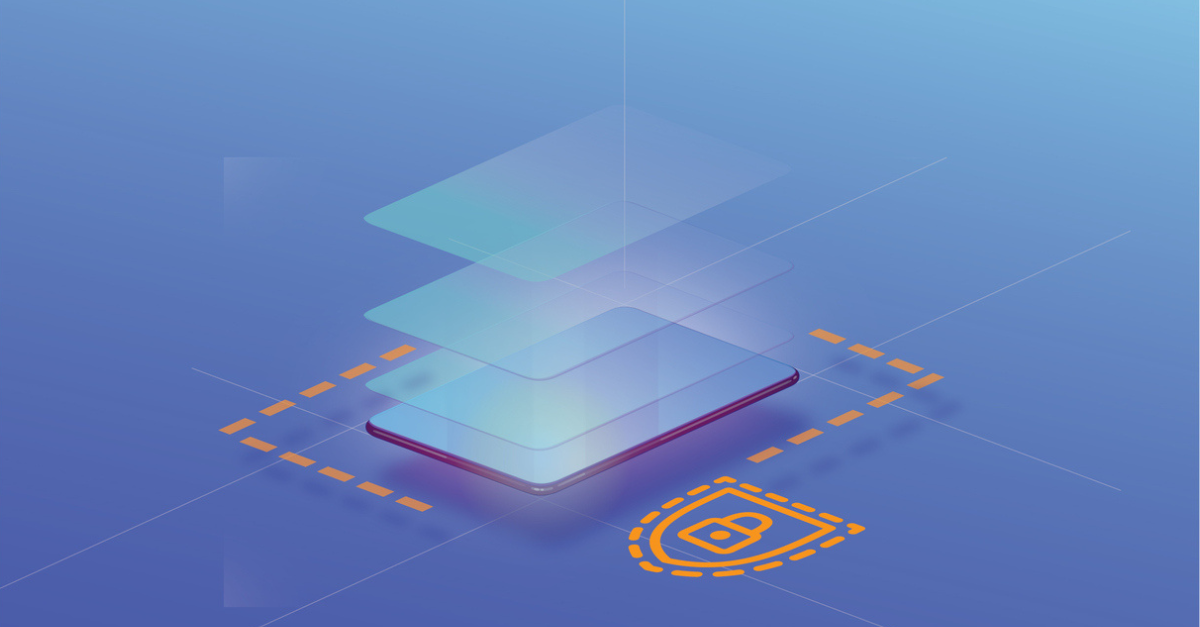The types of cyber threats that can plague organisations are continually evolving in covertness, sophistication and volume, with the consequences often proving severe. Unfortunately, no industry or organisation is too small or immune to cyber attacks.
While some companies invest in ethical hacking or penetration testing to find loopholes in their systems, there is no universal, standalone security procedure that guarantees 100% security across every single organisation and its assets. It’s no wonder why IT departments are under mounting pressure to safeguard networks and infrastructure. But there is one strategy to mitigate a company’s risk and improve cybersecurity posture - adopting a multi-layered security approach.
This article explores the definition and benefits of multi-layered security, along with how you can implement this approach.
What is Multi-layered Security?
Multi-layered security is an approach that utilises various security controls to defend the vulnerable areas of your technology. A layered security approach aims to ensure each defensive component protects a specific area that could be exploited by a hacker, malware or ransomware.
Multi-layered security approaches also ensure each of these components - networks, devices, etc - has a backup to bridge any gaps or flaws. Collectively, these ‘layers’ form a defensive barrier around your organisation. The more effective layers you have in place, the stronger your overall IT security.
What are the four levels in a multi-layered security plan?
The four typical levels in any one system that a layered cybersecurity plan include:
- Devices
- Applications
- Networks
- Infrastructure
Any one of these layers may be targeted by a cybercriminal and put at risk. Ineffective security controls for IoT (Internet of Things) devices can make them more susceptible to attacks. If, for example, a company smartphone is compromised, a perpetrator could breach other layers within the system, such as stored applications and networks.
Benefits of a layered security strategy
With companies aware of threats from hacking, investing in penetration testing is a sensible way of identifying vulnerable gaps in their systems that could be strengthened. Hackers find it much more challenging to infiltrate systems with multiple layers of security. Layers are beneficial for numerous reasons. Each layer provides an additional protective barrier or line of defence.
Think of it like wearing more layers of clothing like jumpers or waterproof jackets to protect yourself from cold or wet weather. Each additional item of clothing works to keep you warmer, drier and less vulnerable to icy winds or rain. It’s the same concept.
While each protective layer is not sufficient to defend a system on its own, layering numerous controls together improves the overall sturdiness, reliability and posture of the system. Multiple layers of security will lower the risk of breaches and make it easier to identify and respond to legitimate threats and take decisive action.
What constitutes a cyber attack?
The National Institute of Standards and Technology (NIST) framework defines a cyber attack as:
“Any kind of malicious activity that attempts to collect, disrupt, deny, degrade, or destroy information system resources or the information itself.”
Cyber attacks can include (but are not limited to) the following:
- Password attacks
- SQL injection attacks (web vulnerabilities caused by programmers’ errors)
- Cross-site Scripting (XSS) attacks
- Phishing attacks
- [Distributed] Denial-of-Service (DoS) attacks
- Man-in-the-Middle (MitM) attacks
- Malware attacks
- Ransomware attacks
Why do cybercriminals and hackers target companies?
Every business has key assets that cybercriminals and hackers might seek to obtain or exploit. Most of the time, a perpetrator wants to obtain your:
- Sensitive personal information
- Customer or staff logins and email addresses
- Databases and documents
- Financial details of the business or its stakeholders or clients
- Intellectual property
- IT infrastructure or services
However, other cyber attacks might be politically, socially or economically motivated. It’s also important to note that some cyber attacks aren’t carried out by hackers. Vulnerabilities can also arise internally as well as from external sources.
This is why multi-layered strategy with a full coverage of trusted integrated security products and solutions is crucial to protecting data, users, customers and sensitive information.
Common ways of implementing security layers
Here are some common ways you can implement the security layers within your organisation:
-
Multi-Factor Authentication (MFA) - Also known as two-factor authentication, this requires users to verify themselves to access networks, applications or accounts. These prevent hackers from exploiting compromised or weak credentials to access your system.
-
Security awareness training - Providing some cybersecurity training is crucial to helping users spot phishing emails, suspicious malware attacks, or other cyber scams that threaten system security.
-
Filtering of emails and internet - Install software that blocks users’ access to websites that are deemed dangerous or high-risk for phishing or malware. Email is a particularly susceptible vector, so secure emails and counteract data loss and phishing attacks. Filtering emails at the gateway significantly protects users and systems from email threats like viruses or ransomware.
-
Firewalls - Firewalls monitor incoming and outgoing network traffic based on a predefined set of rules that you can stipulate. Firewalls bridge the gap between trusted and untrusted networks, only permitting access to those that are deemed safe.
-
Data protection - Data should be backed up regularly and securely stored, with appropriate controls implemented to ensure its protection. Data can be backed up at the network level, server level, or device level.
-
Sophisticated password policies - Most people are guilty of using the same password for multiple logins, applications, or devices. It only takes one compromise to open the door for others that require the same password. Set a minimum password length and complexity rule to limit the use of repeat or weak passwords and improve network security.
-
Managed Detection and Response (MDR) - This is a security solution that combines monitoring software and a physical Security Operations Centre (SOC) to spot suspicious network or system behaviour in real-time.
-
Patch management - Patching refers to distributing and updating firmware and software. Outdated software is often easier to exploit, while patching closes these security holes and simultaneously addresses any bugs or errors.
Developing a multi-layered strategy
With a layered security approach, threats that are detected early are eliminated before manifesting into a legitimate attack. By establishing a definitive set of security controls for your devices, applications, networks and infrastructure, any type of threat is detected much more seamlessly. The layered security approach creates an interconnected and structurally stable line of defence so that any network or server access can be spotted and verified as either legitimate or malicious.
Since the evolution of computers and technology, the types of cyber attacks and exploits have only grown more elaborate and complex. The reality is that cybercrime will continue and shows no sign of slowing down anytime soon. But with a layered security approach to your organisation, your multiple lines of defence can make your system almost impenetrable.
The reputational and financial damage that a cyber attack can cause can be devastating. Therefore, you should implement a security approach that accounts for numerous types of threats and that can quickly and decisively deal with them.
--------------------------------------------------------------------------------------------------------------------------
Note: This blog article was written by a guest contributor for the purpose of offering a wider variety of content for our readers. The opinions expressed in this guest author article are solely those of the contributor and do not necessarily reflect those of GlobalSign.







